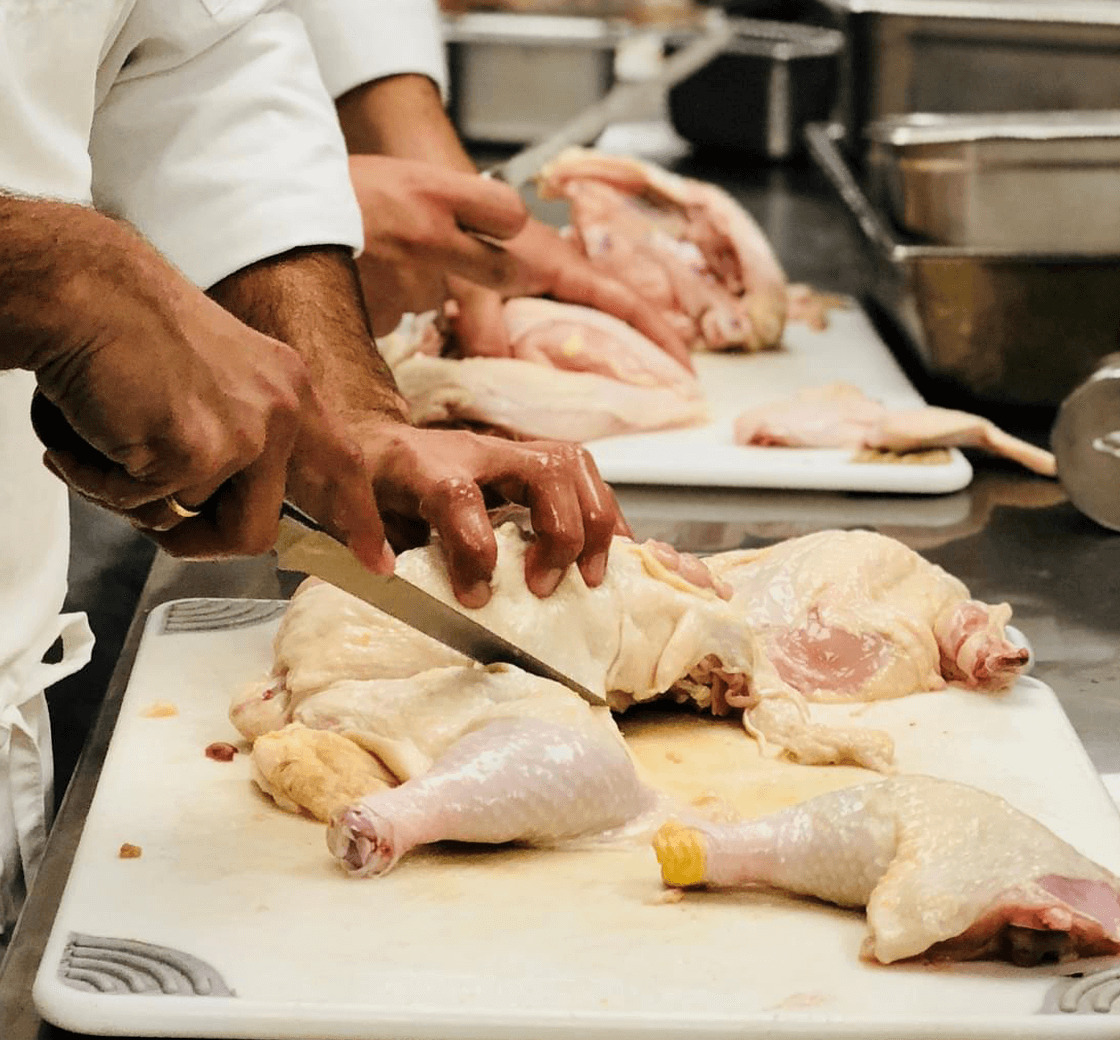
While handling poultry can seem daunting, it really can be a clucking good time! In Knife Skills 2 you'll discover the fundamental techniques required to transform a whole chicken into popular cuts. We'll cover such topics as trussing and spatchcocking, ensuring you leave with the confidence to tackle any chicken preparation in your home kitchen. No matter how you feel when you enter the class, the class promises to enhance your knowledge of poultry preparation and take your skills to the next level. While not a requirement, it helps to have practiced the skills of Knife Skills 1 before taking this class.

You will work in teams to execute the class menu. At the end of class, participants gather to enjoy the food they have prepared. Wine is served with meals in most classes. All class menus are subject to change. While a snack platter is offered in both morning and evening classes, you may want to consider a light snack before joining us for class. Students are encouraged to bring a light lunch or dinner to all pastry classes.

You will work in teams to execute the class menu. At the end of class, participants gather to enjoy the food they have prepared. Wine is served with meals in most classes. All class menus are subject to change. While a snack platter is offered in both morning and evening classes, you may want to consider a light snack before joining us for class. Students are encouraged to bring a light lunch or dinner to all pastry classes.
Let's eat like we're in Italy, from the apps all the way through to a rich dessert! These dishes put you back in that Mediterranean mindset...even if you've never been there. Make and sit down to this warm, comforting Italian banquet of: fried zucchini with Parmesan; veal saltimbocca alla romana; spaghetti carbonara; cavolfiore alla napoletana (cauliflower with raisins and pine nuts).
Hearty hardly begins to describe the extravagant steak feast you'll be making in this class. Not only will you learn how to make the perfect filet mignon, skirt steak and more, but you'll also become versed in the art of rich sauces, like cognac cream, béarnaise and chimichurri. Your saucy menu includes: filet mignon au poivre with cognac cream sauce; onglet béarnaise (hanger steak with tarragon sauce) and skirt steak with Rojo chimichurri.
This four-session continuation of the Wine Essentials series offers in-depth exploration and tastings of some of the world’s more interesting and unusual wines. Studies will include an expanded array of lesser-known varietals and wines, as each class concentrates on one wine category and delves into the wines’ production, characteristics and uses, including discussions of food and wine pairing. Session 1: Advanced White Wines: Side-by-Side Tasting of Interesting Aromatic and Fruity Wines. Session 2: Advanced Red Wines: In-Depth Comparison of Selected Wines From Old and New World Regions. Session 3: Off-Dry to Sweet: Exploration of Elegant Rieslings to Cru Classé Sauternes. Session 4: Fortified and Aromatized Wines With Wine Service: Fascinating Wines, From Vermouths and Sherries to Madeiras and Portos.
Ranked as America’s Best Culinary School (USAToday 2019), our roster of Chef-Instructors have run top kitchens around the globe.
| (Separate multiple addresses with commas like: john@aol.com, jane@aol.com) | |